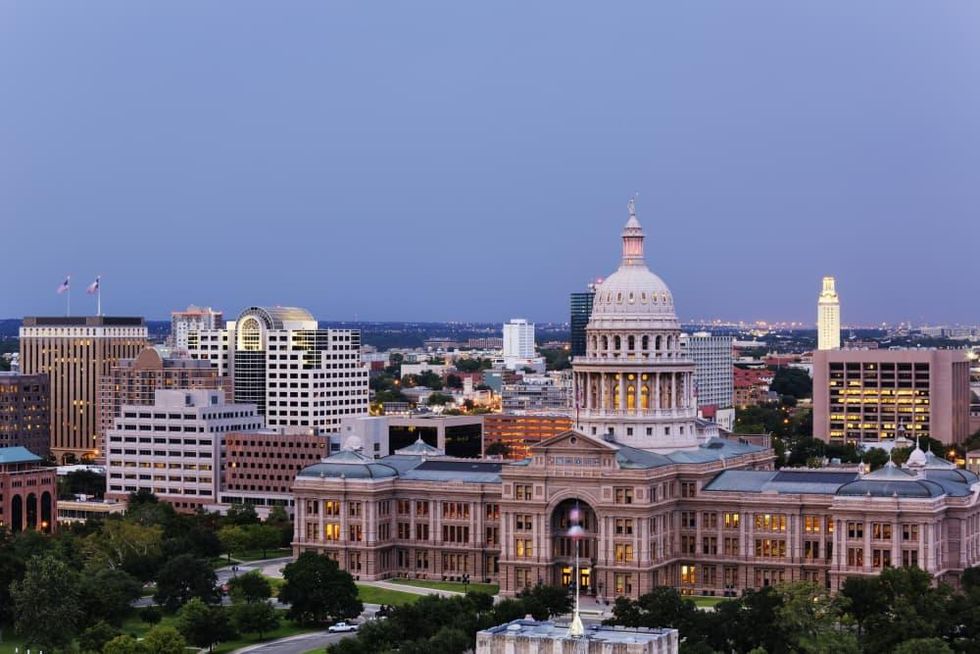History of Austin
Here's the explosive story behind the rebellious woman who saved Austin
If a single name in the history of Austin deserves to be highlighted, that recognition would go to Angelina Belle Eberly (1798-1860). Eberly was born in Tennessee in 1798, but as the saying goes, she got to Texas as fast as she could.
Like many women of the time, Eberly married; had children; and after her first husband died, she married widower Captain Jacob Eberly. Together with their family, the couple moved to Bastrop, Texas. In 1839, they moved to Waterloo (renamed Austin that same year), and the Capital City became forever indebted to Angelina Eberly.
In December of 1842, the president of the Republic of Texas, Sam Houston, called an emergency session with the Texas Legislature. Houston wanted to remove state documents (things like government archives, treaties, military records, land titles, and other artifacts) from Austin because he feared the city was more vulnerable to raids by marauding Native American tribes.
Houston wanted the documents sent to Washington-on-the-Brazos, though many feared he actually wanted to move the capital of Texas to Houston, where the Texas Congress then held their meetings. Relocating the documents, many believed, would bring the move one step closer to fruition. As Houston often said, "Austin was the most unfortunate site on earth for a seat of government."
The seat had been selected during Mirabeau Lamar's tenure as the second president of Texas. As president, Lamar appointed a commission to select a capital of Texas, and they chose the small town of Waterloo, located near the Colorado River and surrounded by picturesque hills. When Sam Houston was reelected president after Lamar (he served as both the first and third president of the Republic of Texas), he reignited the geographic battle for a new capital city.
During this time, Eberly was owner and proprietor of the Eberly House on Sixth Street (then Pecan Street) and Congress Avenue, and was not pleased about the prospect of moving vital documents — not to mention the capital — away from Austin. Both Lamar and Houston were frequent guests at the inn, and when Eberly found out Houston's plans for the archive move, she took matters into her own hands.
Following Houston's orders, a group of Texas Rangers snuck into town and began loading the archives in their wagons. Eberly found out and alerted citizen vigilantes by firing a nearby six-pound cannon loaded with grapeshot pellets (always loaded in preparation for a surprise attack) and fired in the vicinity of the General Land Office, a few blocks to the north of her inn.
Though the Rangers did make off with the archives, they were overtaken by the Austin citizens in Brushy Creek (about 18 miles north of downtown), and the archives were successfully returned to the city and tucked away for safekeeping.
The cannon shot managed to blow a hole in the side of the old General Land Office, and the battle later became known as the Archive War. The skirmish ended peacefully, and the archives remained in the city. Four years later in 1846, Austin was officially crowned the capital of Texas.
Widowed once again, Eberly packed her family and her belongings and headed for the Gulf Coast town of Port Lavaca in 1846 before moving a year later to Indianola, Texas, where she lived out the remainder of her days operating the American Hotel. However, she will always hold a special place for Austinites, due to her fierce loyalty and bravery.
Today, Eberly's mark can still be seen across Austin. For example, the Austin History Center Association, housed in the Austin History Center, holds an annual fundraising event, the Angelina Eberly Luncheon, in honor of Eberly.
There are also two relatively new restaurants devoted to the memory and spirit of Angelina Eberly: Eberly Austin on South Lamar Bouleveard and Cannon & Belle in the downtown Hilton hotel.
And finally, there is the famous statue of Angelina Eberly firing her cannon. Situated on Congress Avenue between Sixth and Seventh streets, the statue was designed by artist Pat Oliphant and was a gift to the city in 2004 from Capital Area Statues (CAST), the same company that oversaw statue projects of Willie Nelson in front of Austin City Limits and the Philosopher's Rock in front of Barton Springs.



 Lots of people want to live in Leander. Leander Parks & Recreation/Facebook
Lots of people want to live in Leander. Leander Parks & Recreation/Facebook